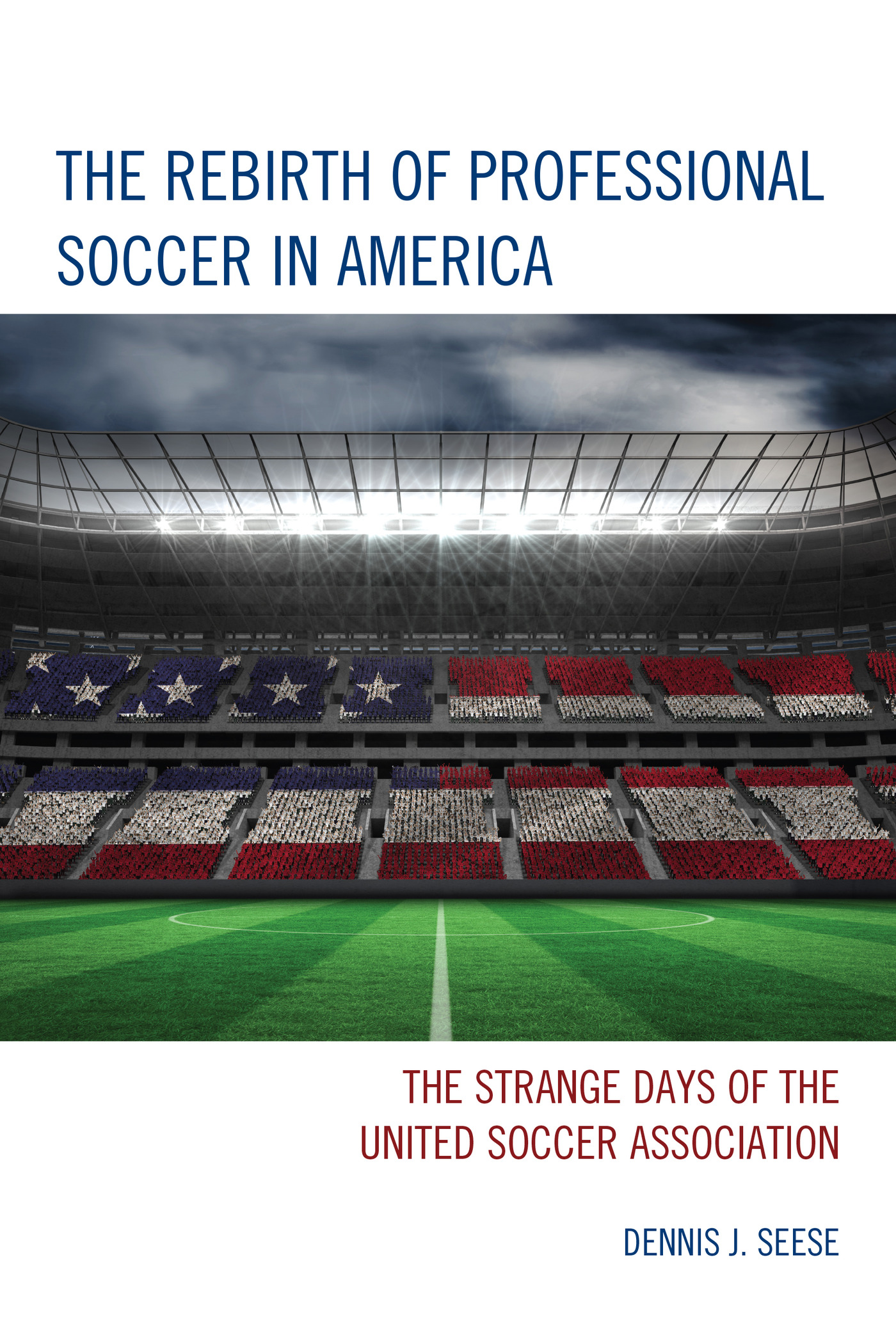The Rebirth of Professional Soccer
in America
The Rebirth of Professional Soccer
in America
The Strange Days of the
United Soccer Association
Dennis J. Seese
ROWMAN & LITTLEFIELD
Lanham Boulder New York London
Published by Rowman & Littlefield
A wholly owned subsidiary of The Rowman & Littlefield Publishing Group, Inc.
4501 Forbes Boulevard, Suite 200, Lanham, Maryland 20706
www.rowman.com
Unit A, Whitacre Mews, 26-34 Stannary Street, London SE11 4AB
Copyright 2015 by Rowman & Littlefield
All rights reserved. No part of this book may be reproduced in any form or by any electronic or mechanical means, including information storage and retrieval systems, without written permission from the publisher, except by a reviewer who may quote passages in a review.
British Library Cataloguing in Publication Information Available
Library of Congress Cataloging-in-Publication Data Available
ISBN 978-1-4422-3894-7 (paperback: alk. paper)
ISBN 978-1-4422-3895-4 (ebook)
 TM The paper used in this publication meets the minimum requirements of American National Standard for Information Sciences Permanence of Paper for Printed Library Materials, ANSI/NISO Z39.48-1992.
TM The paper used in this publication meets the minimum requirements of American National Standard for Information Sciences Permanence of Paper for Printed Library Materials, ANSI/NISO Z39.48-1992.
Printed in the United States of America
Acknowledgments
This book would not have been possible without the love, patience, faith, and encouragement exhibited by the following people: My wife, Alison Peppers Seese, and our son, Miles Francis (I cant express how much I love you both for carrying me through the small hours of fear and self-doubt); my brother, Andrew Paul (you helped me through one of the darkest times of my life and this book would have been impossible without youIll never be able to thank you enough); my fact-checking cuz, Michael Prosser (your eternal unending support and encouragement is and has always been invaluablethanks for always lending your time and sharp editorial mind); the Seese family, my mother, Danette, and father, Dennis, my brother, Danny, my sister-in-law, Tiffany, and my lovely nieces, Ryann and Charlee (thank you all for picking me up when I was ready to quit and for believing in me when I didnt even believe in myself); my entire DePaulo family; the Perkarciks; Aunt Sharon; Kenny; the Abel Family; the Stank family; the McMinn family; Terry and Gloria Peppers; Keith J. Minnaji; Ryan Vok (for always believing and creating); my wonderful RTL colleagues at American University, particularly my friend Mark Winek (I cant thank you enough for your kindness and willingness to listen); my fantastic colleagues at Georgetown Day School, especially my good friend Aaron Pina (this past summer tied it all together, brother); my colleagues at Managing Madrid; and the editors at In Bed with Maradona (you all started and gave life to this beast).
Special thanks are reserved for Mr. Derek Liecty. Mr. Liecty, the general manager of the Oakland Clippers, was unbelievably kind and gracious with his time, sharing many insights, memories, and firsthand accounts of the events of the era that were indispensible in making this book come alive.
Finally, Id like to thank my editor, Christen Karniski, for her endless patience and professionalism throughout this process. Im so grateful for your insight and all the advice and counsel youve given me. Thank you so much!
Introduction
In Small Is Beautiful, E. F. Schumacher made the following observation about capitalism: Call a thing immoral or ugly, soul-destroying or a degradation to man, a peril to the peace of the world or to the well-being of future generations: as long as you have not shown it to be uneconomic [unprofitable] you have not really questioned its right to exist, grow, and prosper. Most American journalists and tastemakers were already in the habit of depicting soccer as a degradation to man and/or a peril to the well-being of future generations. But nobody had yet definitively proved in the postwar era that it was uneconomic or unprofitable in the United States, particularly as it flourished in the burgeoning global commercial and mass-media market that titans of American industry were increasingly moving and functioning within.
Thus it was then in the fateful year of 1966, coincidentally a World Cup year, that seed for the relaunch/rebirth of professional soccer in the United States would be sown by a brave and hearty band of wealthy American businessmen, many of whom already had interests and holdings in professional sports. By Schumachers formula, the success (or failure) of this rebirth would determine whether the sport would have a legitimate chance or right to exist, grow and prosper in the United States, truly the games reluctant, antagonistic final frontier.
To be clear, there were professional leagues in the United States before the mid-60s, the American Soccer League (ASL) being most prominent among them. Formed in 1921, the ASL enjoyed a modicum of success before the Great Depression essentially wiped the league out of existence by draining money from its wealthy industrial patrons. The ASL averaged crowds of 4,000 to 5,000 spectators, with the Fall River Marksmen of Fall River, Massachusetts, drawing around 12,000. The ASL, though reasonably popular, was concentrated almost exclusively on the East Coast and thus not national in its reach. The ASL operated on and off in many incarnations and iterations after the Depression, never enjoying the success or profile it had enjoyed during those few years before the crash.
If examined underneath the professional level, the game in America has accumulated a history far more rich and colorful than casual fans and armchair historians may realize. From all-conquering factory-based teams such as the Fall River Marksmen and Bethlehem Steel in the early twentieth century to the vast, complex networks of ethnically based amateur and semiprofessional teams that have thrived all over the country for decades in cities such as Chicago, Boston, and St. Louis, soccer has been a significant, if often silent and slippery, part of American cultural history. Those two prominent connections and associationslabor and ethnicityhave, however, conspired to engender an almost subconscious level of mistrust, paranoia, condescension, fear, and outright antagonism toward the game in the minds of many within the American establishment, particularly sports journalists.
Charles Parrish and John Nauright note that these feelings seemed only to increase in intensity after World War II, writing that during the Cold War soccer faced an ideological barrier for the game no matter how much they tried.
This introduces an interesting dichotomy of subversion and exclusion that cuts in both directions. Gary Armstrong and James Rosbrook-Thompson noted that soccer became subject to fears that the game provided relay points through which a dangerous immigrant population would make their presence felt in American society. It can also be argued that as time went on the game provided relay points through which women and other marginalized groups could and did make their presence felt in American society. Conservative establishment forces likely recognized this to be at the core of soccers subversive nature and historical legacy, but the game was also viewed as a symbolic force capable of undermining or at least questioning and suggesting a viable alternative to U.S. hegemonic and cultural dominance, thus ironically they marshaled a uniquely American language of subversion against the game as it sought to create a foothold in postwar America. Traces of that language dot this story.
Next page
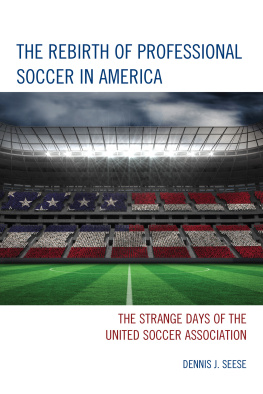
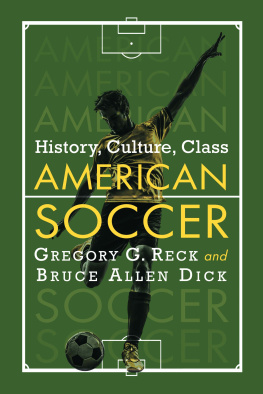
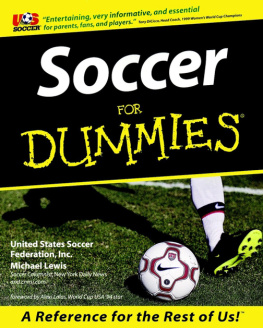

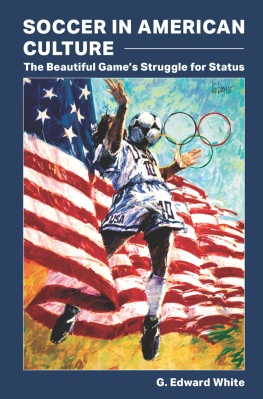
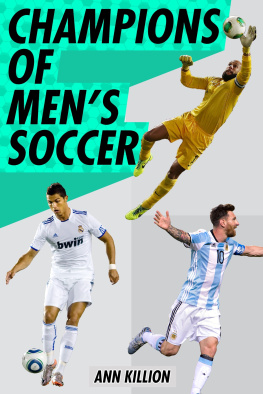

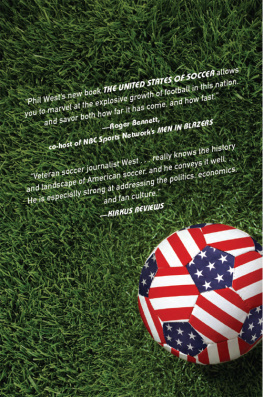
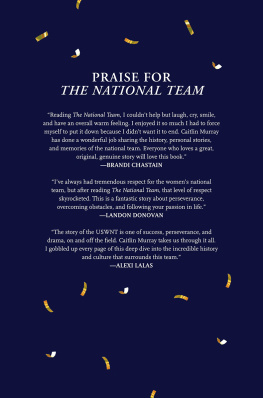
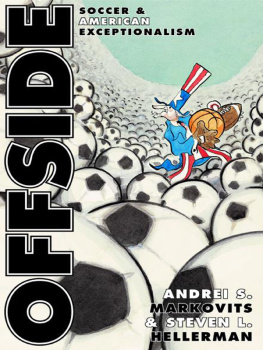

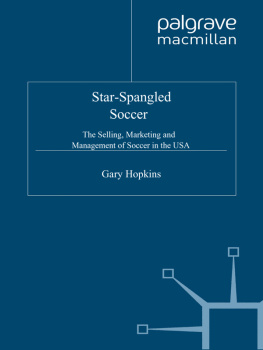
 TM The paper used in this publication meets the minimum requirements of American National Standard for Information Sciences Permanence of Paper for Printed Library Materials, ANSI/NISO Z39.48-1992.
TM The paper used in this publication meets the minimum requirements of American National Standard for Information Sciences Permanence of Paper for Printed Library Materials, ANSI/NISO Z39.48-1992.